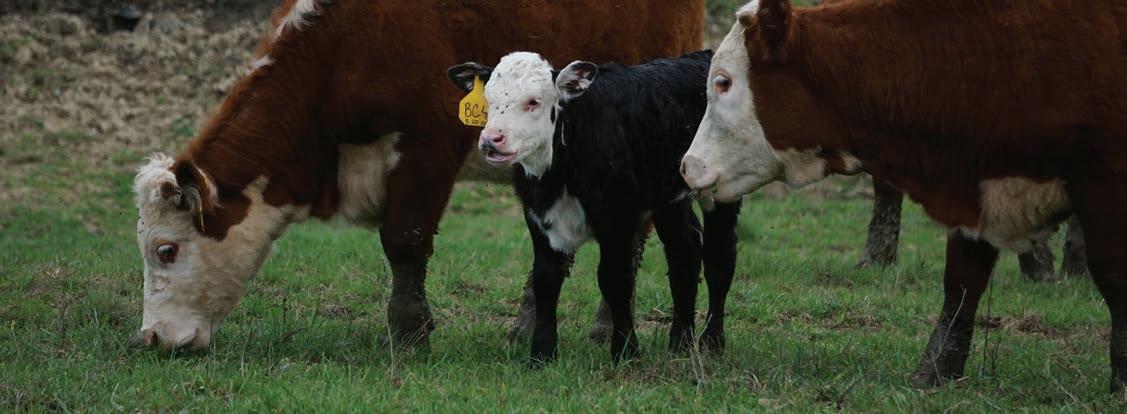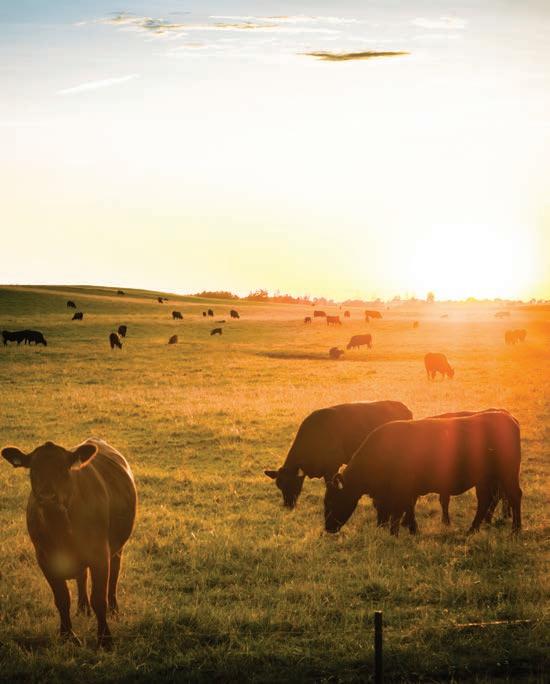
5 minute read
U of I: Selecting Heifers That Are Right for Your Operation
Selecting heifers that are right for your operation
BY MELINDA ELLISON Range Livestock Extension Specialist Nancy M. Cummings Research, Extension, and Education Center Animal, Veterinary and Food Sciences Department University of Idaho
Advertisement
Most beef producers are weaning calves and making selection decisions on replacement heifers this time of year. Sometimes it can be difficult to find the time to make the best selection decisions with everything else that is going on, and when there are not enough hours in the day, it is easy to select heifers on shipping day based on how they look and what you can remember about their mother. We have all been guilty of doing just that on occasion, but that selection method by itself does not always work when you are trying to make genetic improvements in your cow herd. Sure, you do not want to keep the bag-of-bones with the potbelly regardless of their genetics, but the key to making the best decision is having and referring to good records and supplementing those selection decisions with conformation and demeanor. Sitting down with your records spread out in front of you can help speed up the decision-making process and ensure that you are choosing the correct heifers to retain in your herd.
1. IDENTIFY WHAT YOU WANT TO IMPROVE IN YOUR HERD
Genetic progress is not just made through bull selection. As you bring replacement heifers into your herd, remember that the bull only throws half of the offspring’s genetics, and the cows are responsible for the other half. Take some time to think about what would really benefit your herd, whether it is better growth, better mothering ability, or better performance on range. Selection can be as simple as choosing one or two traits to select for or using several traits in an index. • Single Trait Selection: Select the top performing heifers for one trait. • 2 or 3 Trait Selection: Select heifers that perform above a specific threshold for both/all traits OR select the top performing heifers in one trait, and then from that group, select the top performing heifer in the second trait (this method works well for selection for the first trait at one time period, and then selection for the other trait at
Is Proud To Support
The Idaho Cattle Association
powderriver.com
P: 800.453.5318 F: 801.377.6927
THE AUTHORITY IN LIVESTOCK HANDLING EQUIPMENT
a later date; for example, trait 1: weaning weight, trait 2: yearling weight). • Index Selection: Select for multiple traits using a weighted index. This method allows you to choose how important each trait is to the selection. For example, you may want to have one trait make up 60% of the decision, the second trait make up 15% of the decision, the third trait make up 10%:
Index Value = (0.6 x Trait 1) + (0.15 x Trait 2) + (0.10 x Trait 3)
Another way to weight the index is to put dollar values on each trait. For example, each pound of weaning weight may be worth $1.90, and you may estimate that it costs you $0.50 in labor for each pound of birth weight above 80 pounds. These values can also be incorporated into the index as a weighted value:
Index Value = ($1.90 x lb Weaning Weight) + ($0.50 x lb Birth Weight above 80 lb) + ($ x Trait 3)
As long as you calculate the index the same for each heifer, you will be able to select the best performing animals with the highest index values. Personally, I use an Excel spreadsheet to do the math for me!
The Oldest Ranching Job Board on the Internet
• Post a job or search job listings • Since 1998, based in the USA
WEBSITE TRAFFIC: OVER 50,000 VISITS MONTHLY

Visit www.RanchWork.com or scan the QR code
2. DETERMINE IF YOU HAVE THE RECORDS YOU NEED TO SELECT ON INDIVIDUAL TRAITS
Maybe you are most interested in improving weaning weight, but to do this, you will need individual weaning weights on each of your heifers. Additionally, if you do have the capability to weigh each animal at weaning, do not forget to account for differences in age and birth weight. Selecting your biggest heifers does not necessarily mean you are getting your best growing heifers (see Figure 1, for example). Often, body weight at weaning reflects age more so than it does gaining ability. Assigning heifers into categories, such as ‘small’, ‘medium’, or ‘large’, when you do not have a scale for measuring individual body weights can also be an effective selection tool.
Heifer ID
Figure 1. Heifer calves born in March/April and weaned on October 15.
Birth Weight Weaning Weight Age at Weaning
Average Daily Gain 001 90 lb 545 lb 195 days 2.3 lb 002 70 lb 497 lb 180 days 2.4 lb 003 65 lb 512 lb 172 days 2.6 lb
3. USE INFORMATION FROM MOTHERS AND GRANDMOTHERS TO HELP WITH SELECTION
Quality growth genetics are only so good in a range cow herd. It is important to look back in the records to make sure you are not keeping heifers from a line of cows that fall out of the herd by age 4, do not bring a calf home from range half of the time, bring home a small, dinky calf at weaning every year, or have calving problems every year. For a range herd, it is important to have lines of cows that are hardy on range, bring home a big, healthy calf each fall, breed back quickly, stay in the herd to a ripe old age, have no calving problems, and have good milking ability (but not too much).
These are some simple methods that you can add to improve your replacement heifer selection decisions and make bigger strides in genetic improvements in your herd. Identifying where you can improve your herd genetics and keeping a good set of records can make all the difference in your selection program. Often you can make selection decisions based on individual performance (such as weaning weight) and then weed out poor cow lines by checking each heifer’s maternal line records and assessing her physical conformation. Remember, your county or statewide UI Extension educators are always happy to assist in this important decision-making process!







